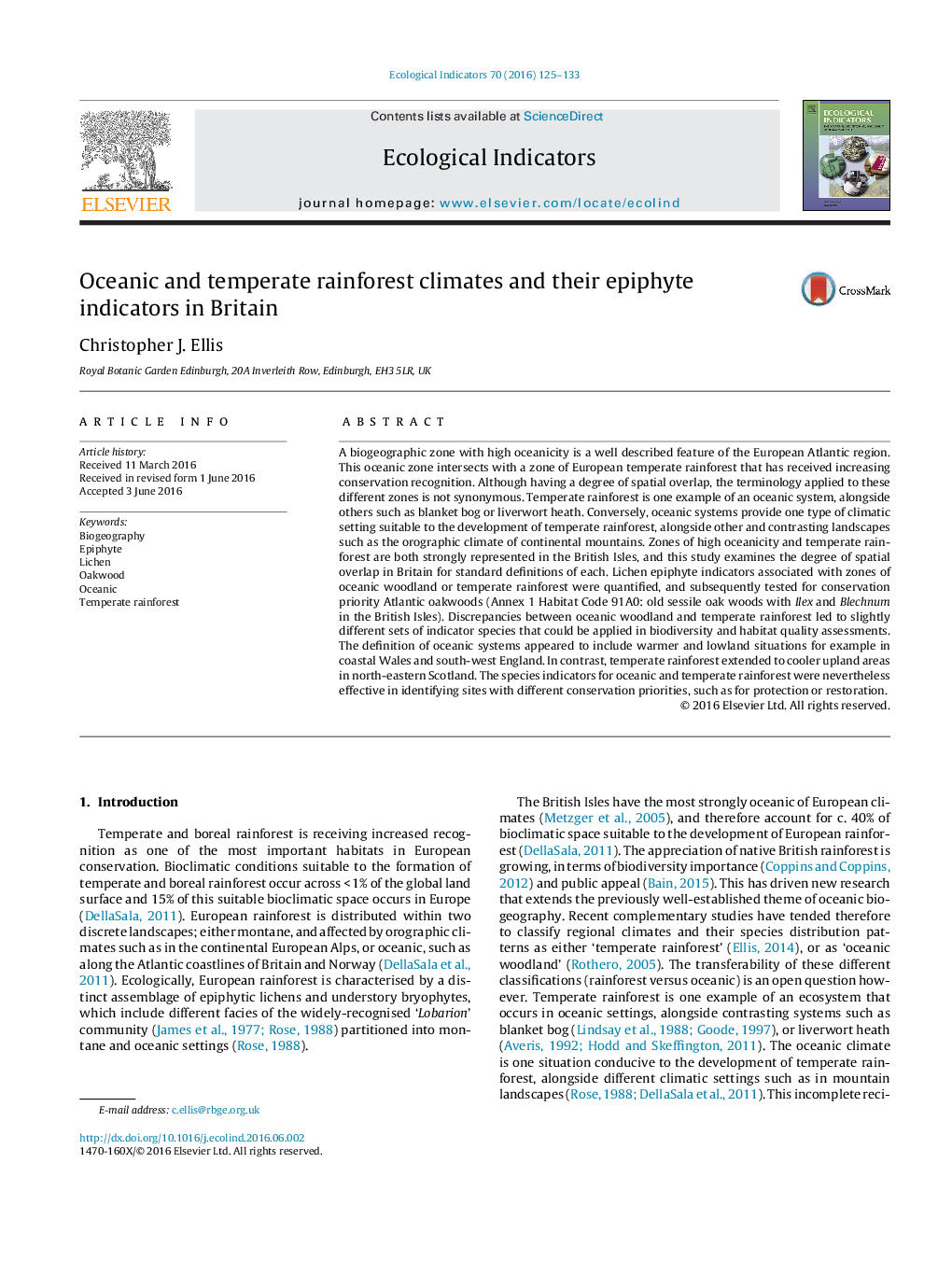| Article ID | Journal | Published Year | Pages | File Type |
|---|---|---|---|---|
| 6293067 | Ecological Indicators | 2016 | 9 Pages |
Abstract
A biogeographic zone with high oceanicity is a well described feature of the European Atlantic region. This oceanic zone intersects with a zone of European temperate rainforest that has received increasing conservation recognition. Although having a degree of spatial overlap, the terminology applied to these different zones is not synonymous. Temperate rainforest is one example of an oceanic system, alongside others such as blanket bog or liverwort heath. Conversely, oceanic systems provide one type of climatic setting suitable to the development of temperate rainforest, alongside other and contrasting landscapes such as the orographic climate of continental mountains. Zones of high oceanicity and temperate rainforest are both strongly represented in the British Isles, and this study examines the degree of spatial overlap in Britain for standard definitions of each. Lichen epiphyte indicators associated with zones of oceanic woodland or temperate rainforest were quantified, and subsequently tested for conservation priority Atlantic oakwoods (Annex 1 Habitat Code 91A0: old sessile oak woods with Ilex and Blechnum in the British Isles). Discrepancies between oceanic woodland and temperate rainforest led to slightly different sets of indicator species that could be applied in biodiversity and habitat quality assessments. The definition of oceanic systems appeared to include warmer and lowland situations for example in coastal Wales and south-west England. In contrast, temperate rainforest extended to cooler upland areas in north-eastern Scotland. The species indicators for oceanic and temperate rainforest were nevertheless effective in identifying sites with different conservation priorities, such as for protection or restoration.
Related Topics
Life Sciences
Agricultural and Biological Sciences
Ecology, Evolution, Behavior and Systematics
Authors
Christopher J. Ellis,
